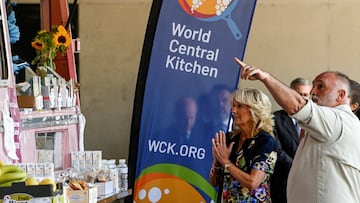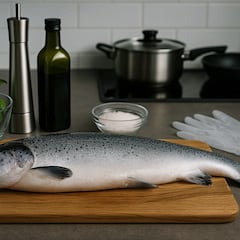Chef José Andrés recommends how to drink coffee to millions of Americans: “In Spain it is enjoyed in a substantially different way. It’s a social thing”
The international chef has explained Spanish coffee culture in a recent edition of his newsletter, Longer Tables, highlighting some local concepts that are unfamiliar in the US.

José Andrés is an acclaimed chef who is the face of the NGO World Central Kitchen and runs numerous restaurants that bring his Spanish culinary touch to the U.S. He has become a familiar face in American food culture, frequently appearing as a guest on The Late Show with Stephen Colbert and being awarded the Presidential Medal of Freedom by Joe Biden.
In his work and his presence in the international food scene, rather than distancing himself from his roots, he has always championed the food culture that defines life in Spain.
When I first arrived to Washington DC in 1993, Senator Moynihan told me - “if you love America, America will always love you back.”
— Chef José Andrés 🕊️🥘🍳 (@chefjoseandres) January 4, 2025
Today, I’m humbled to receive the Presidential Medal of Freedom. I know that immigrants are bridges…we build the longer tables that connect us… pic.twitter.com/vyV5g4ziyl
A prime example of this is his recent defense of coffee and everything surrounding it in an edition of Longer Tables. While he acknowledges that coffee is a universal beverage, nostalgia takes him back to the unique coffee culture of his homeland. According to the chef, both Spain and the United States take coffee seriously, but the way people enjoy it in Spain is fundamentally different.
It’s a matter of lifestyle, of how people perceive their surroundings—of culture, in the end, and how individuals create their own small daily rituals. Here in the U.S., coffee is served in large cups and consumed on the go. In Spain, however, it requires a moment of pause or enjoyment, ideally shared with someone else. “It’s something social,” the chef says in his substack Longer Tables with José Andrés.
“In Spain, we also take our coffee very seriously, but the way we enjoy it is very different. Of course we will make it at home, but also, in the cities and towns all around Spain, coffee is less of a go, go, go drink…it is a social thing," he says. “You will find people in cafés everywhere, relaxing, taking a moment to enjoy their coffee and maybe have a conversation.”
Learn to enjoy coffee the Spanish way
Describing something that is meant to be experienced rather than explained is no easy task, but José Andrés gives it a try. He looks back on the days when he lived in Barcelona, remembering how Juanito would serve him café con leche at Bar Pinotxo in La Boquería—because coffee is also nostalgia.
To help us understand, he lists the most common types served in Spanish cafés: solo (espresso), cortado (espresso with a dash of milk), manchado (milk with a splash of coffee), con hielo (over ice), and liqueur-infused versions, particularly the carajillo (coffee with a splash of brandy, whiskey or rum).
He also highlights the tradition of pairing coffee with a sweet treat, emphasizing the Spanish concept of merienda, an afternoon snack enjoyed between lunch and dinner. Instead of cookies, he celebrates magdalenas (Spanish muffins), ensaimadas (Mallorcan pastries), churros, and torrijas (similar to French toast). A truly Spanish approach. Because while the world moves faster and faster, in Spain, coffee still demands time and space.
The MERIENDA is a light meal -gargantuan feast for some people- taken between lunch and dinner.
— Mythical Iberia (@MythicalIberia) February 23, 2023
For children, at least years ago, it used to consist of a sandwich while for adults it's usual to have a coffee with some cake or pastries.
It's the second best meal of the day. pic.twitter.com/0t2Y4vpSoP
*This article was written by Sergio Murillo, translated with use of AI and edited by Jaime Gago.
Related stories
Get your game on! Whether you’re into NFL touchdowns, NBA buzzer-beaters, world-class soccer goals, or MLB home runs, our app has it all.
Dive into live coverage, expert insights, breaking news, exclusive videos, and more – plus, stay updated on the latest in current affairs and entertainment. Download now for all-access coverage, right at your fingertips – anytime, anywhere.


Complete your personal details to comment